
The Himalayas of India: Ladakh and Srinagar,
Summer 2013
Page 6 of 13
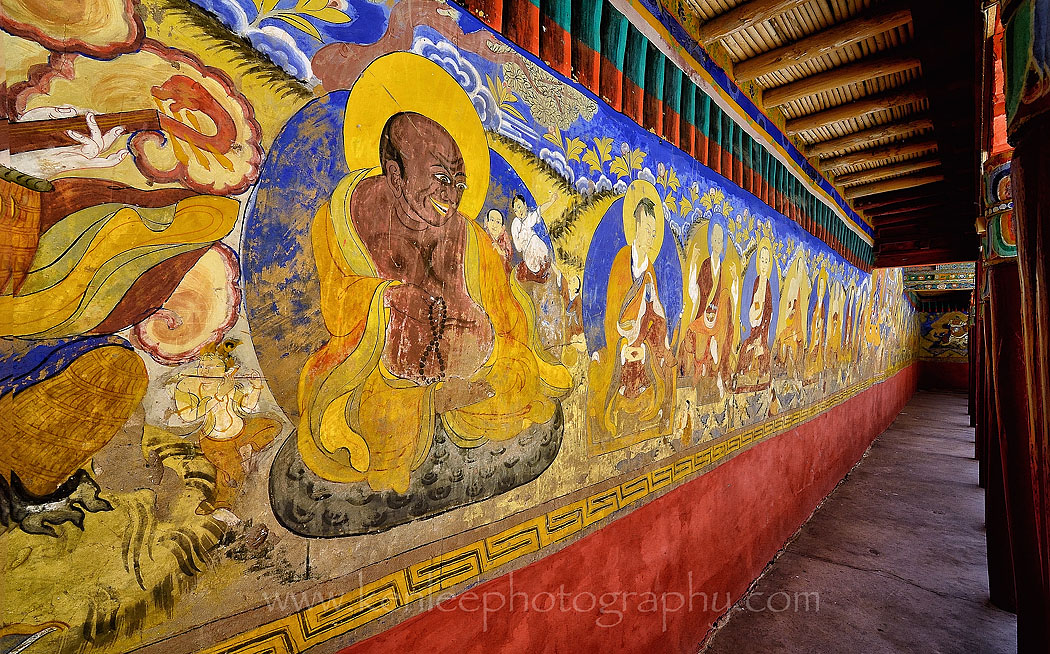 Friday 21 June 2013 - Thikse Monastery, continued:
Friday 21 June 2013 - Thikse Monastery, continued:One of the many murals at Thikse Monastery. |
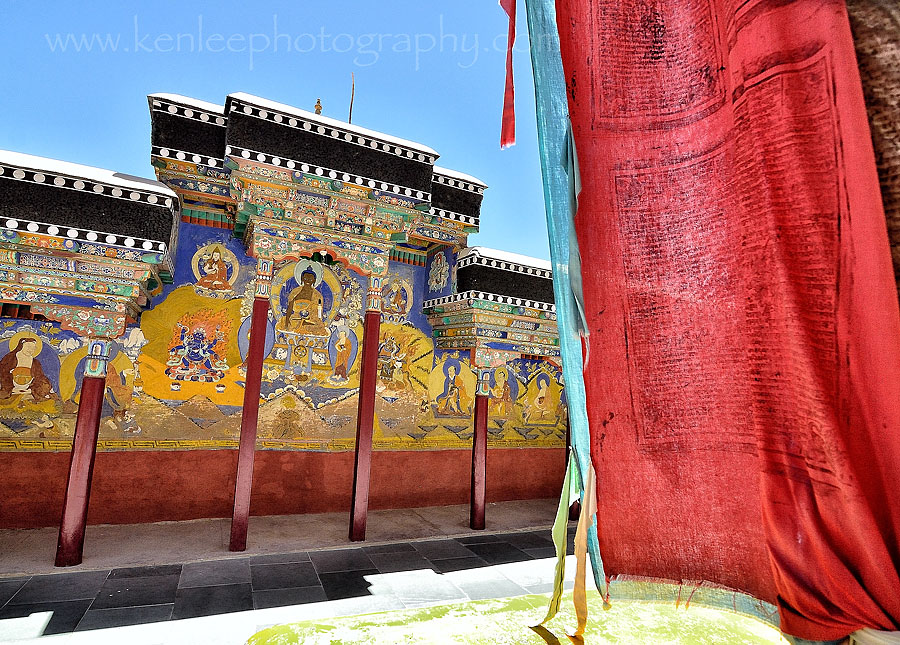 The courtyard at Thikse Monastery, with murals on the left, and a red prayer flag on the right. Prayer flags release their prayers to the heavens when whipped by the wind.
The courtyard at Thikse Monastery, with murals on the left, and a red prayer flag on the right. Prayer flags release their prayers to the heavens when whipped by the wind. |
 The library in Thikse Monastery, full of Buddhist scrolls.
The library in Thikse Monastery, full of Buddhist scrolls. |
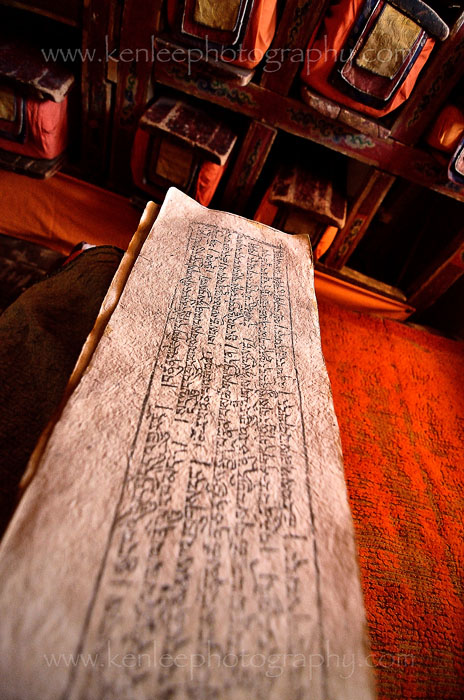 Buddhist scroll in the library at Thikse Monastery. Buddhist scroll in the library at Thikse Monastery. |
I climbed back down, but not before making four videos of me hopping for John, a filmmaker friend. I figured this was the last time to make a video of me hopping while having something that was readily identifiable as Tibetan Buddhist monasteries in the Himalayas since I was to leave for the mysterious Aryan valley of Dah Hanu tomorrow morning. John has some sort of project where he wants a collection of people hopping on one leg from all over the world. And he wants them to do it in front of iconic or obvious places, such as Himalayan mountains, monks, whatever. I later filmed another one in Kashmir in front of Dal Lake by the houseboats. |
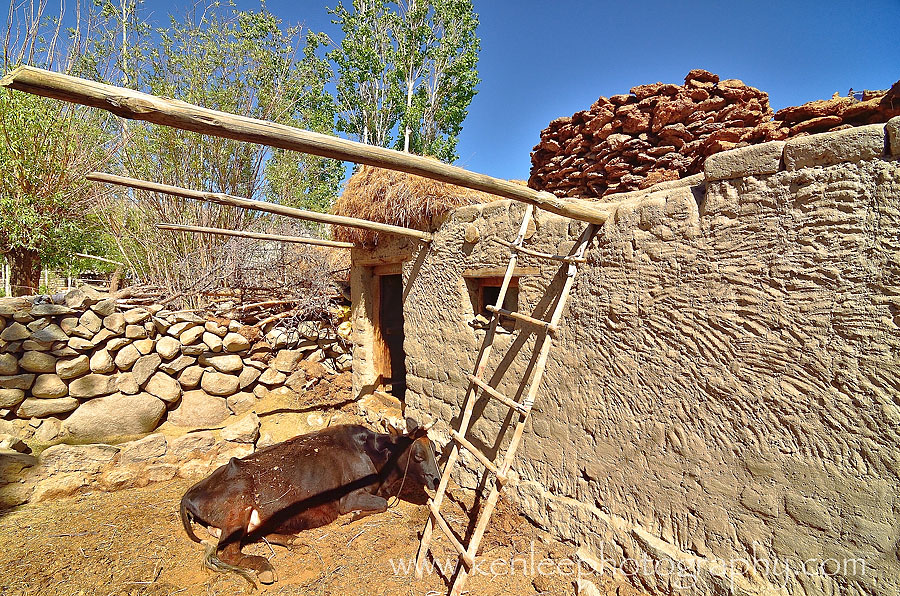 A cow in the village of Thikse. A cow in the village of Thikse. |

I waited at the road for an hour. No bus came. A young guy with good English skills in a tourist car offered me a ride, and although I don't ordinarily hitchhike, I took him up on it, as he seemed studious and trustworthy, and I very clearly was going to be stranded and miss my bus ride to Dah Village the next day if I didn't. His name is Stansrung. He lives in Shay village, is studying Economics in Chandigarh, and sometimes does takes tourists around Leh as a guide. He also stopped at Shay Monastery so I could take photos of the interesting rock carvings that are just off the road to the left of the monastery. |
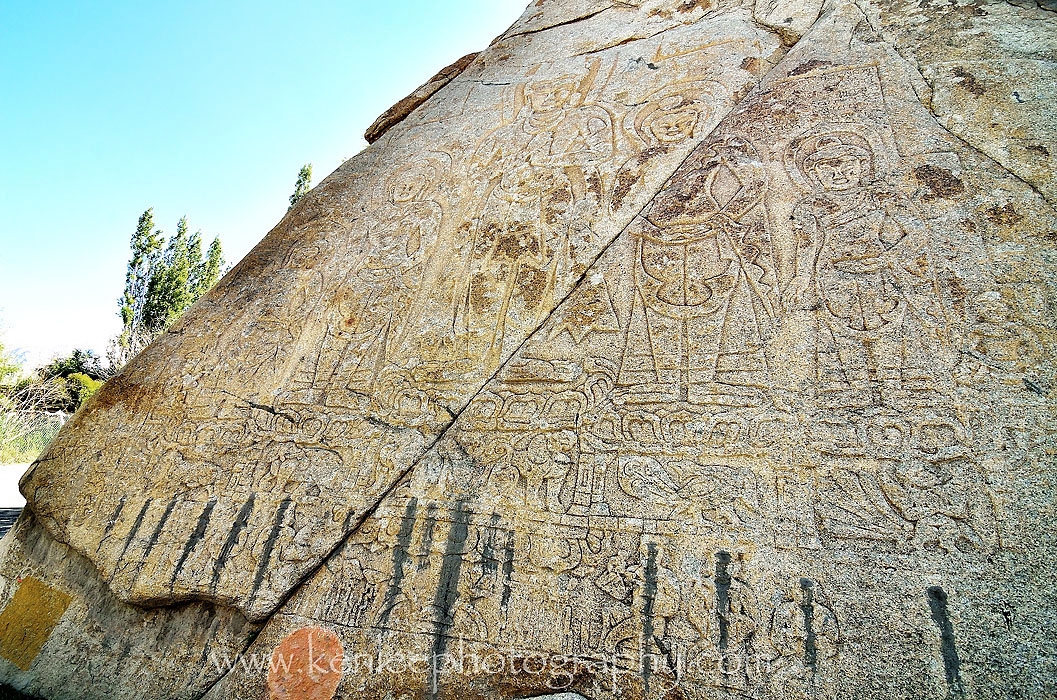 Rock carvings at Shay Monastery. The palace was built around 1655, so perhaps these rock carvings were made around the same time. This was the former summer capital in Ladakh, but unfortunately, Shay (Shey) Palace is in shambles now. Rock carvings at Shay Monastery. The palace was built around 1655, so perhaps these rock carvings were made around the same time. This was the former summer capital in Ladakh, but unfortunately, Shay (Shey) Palace is in shambles now. |
But not tall enough to tower over the doorway to my hotel room. It's a miracle that I didn't slam my head against this doorway more than once. Note the auspicious room number. |
I also met Ajun ("Green Eye"), a motorcyclist and photographer from Delhi, now a Facebook friend as well. We were to meet up in Delhi as well, although that never panned out. He is an enthusiastic photographer, and I hope to meet him again. By the way, as with just about all their food, the vegetable sizzler was delicious. |
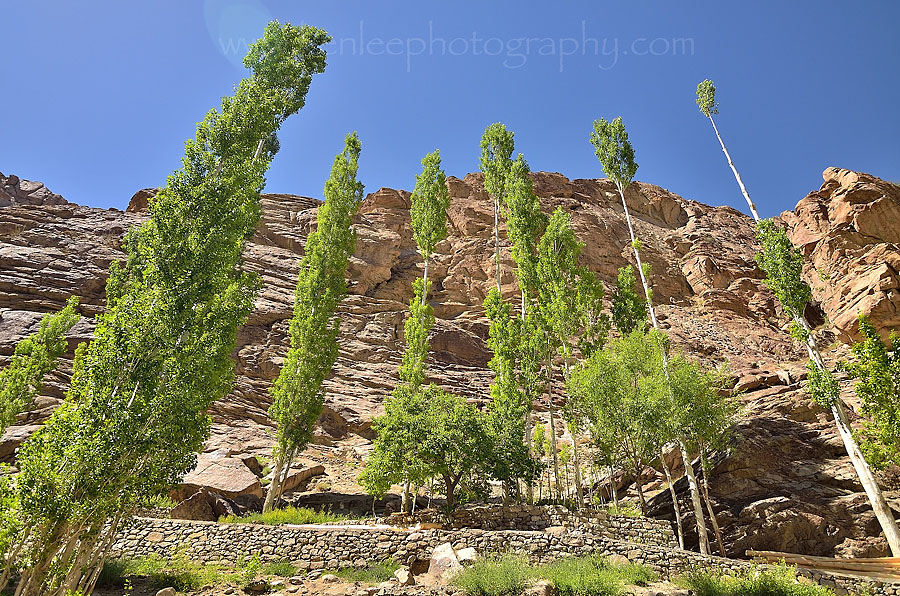 Saturday 22 June 2013 - Leh to Dah, The Aryan Village: Saturday 22 June 2013 - Leh to Dah, The Aryan Village:The tiny village of Dah is accessible from the road only by footpath, largely isolated from the rest of the world, its Aryan inhabitants seeking to keep their culture distinct. At a population of 4000, the people the Ladakhis call the Brokpas are one of the smallest ethnic groups in the world, and speak a dialect that they call Miramo, which according to a book by Breton Schwarzenbach, has "strong Indo-European roots". They also have their own animist religion called "Bon-Cho", where they worship elemental spirits, mixed with Tibetan Buddhism. Some theorize that the people are descendants of Alexander the Great's invading army, but no one actually seem to know their origins. DNA testing is apparently still inconclusive, although I'm not sure how or why. And some German women have sought the men for their pure Aryan seed. While some of the men may happily oblige them, it's frowned upon by village elders and the Indian Army (this area requires a permit to enter). The stop for Dah is in the middle of the road, with no discernible buildings or signs, just a path. One then walks to the mountain side of the road, away from the Indus, taking a trail for approximately 10-15 min uphill. On the left, with no visible sign, is the Skybapa Guest House, run by a very nice guy named Lundhup Dorjey. His guest house is charming if crude, with three rooms on the top roof, and darker rooms at the bottom with bathrooms and a bucket shower on the ground floor as well. As there are no restaurants in Dah, we eat at the guest house. Lundhup prepared rice, dal, turnip, and spinach, which was rather welcome since we were all quite hungry. He also has a large mulberry tree, which I haven't seen since childhood, and makes mulberry jam. |
 Upon getting there, the couple and I took a walk through the village, although we eventually separated, and I began talking and taking photos of people in the village. The first group was two 61 year olds and one 50 year old hanging around near some cut branches, and they asked me to sit and began asking questions in very stilted, broken, basic English. They refer to themselves as Aryans, not Brokpa. Upon getting there, the couple and I took a walk through the village, although we eventually separated, and I began talking and taking photos of people in the village. The first group was two 61 year olds and one 50 year old hanging around near some cut branches, and they asked me to sit and began asking questions in very stilted, broken, basic English. They refer to themselves as Aryans, not Brokpa. |
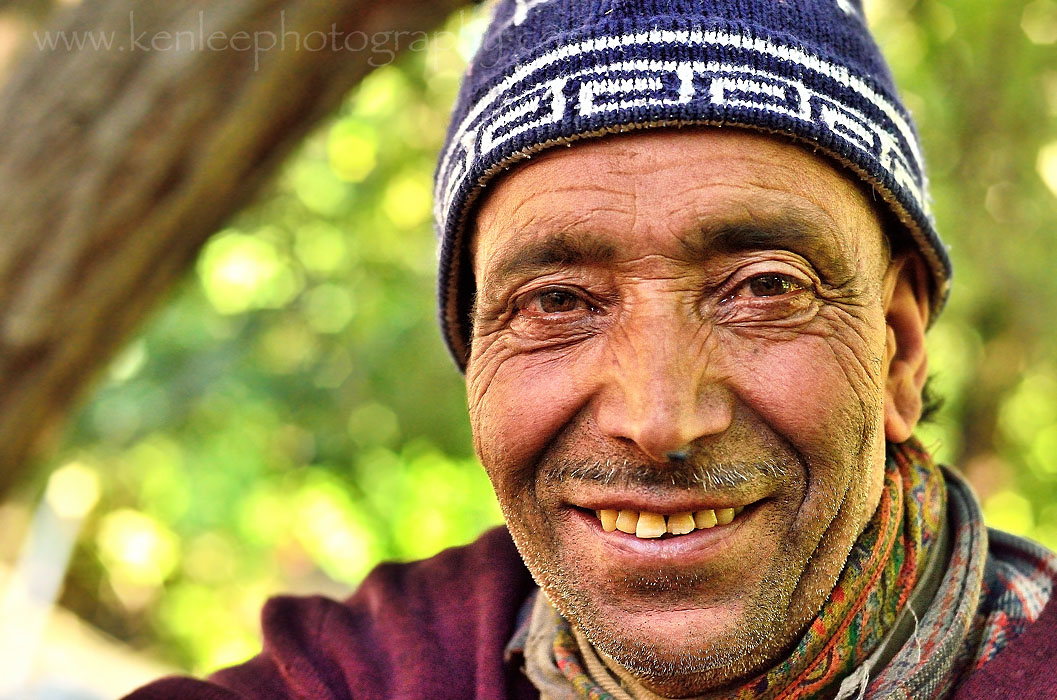 More portraits of the Aryan race of people in Dah Village. More portraits of the Aryan race of people in Dah Village. |
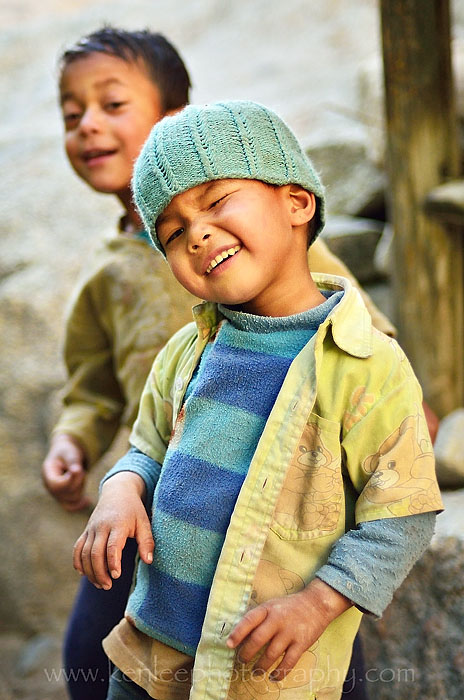 Most children, except for a few of the children in several isolated villages in Burma who fled, love hamming it up for the camera. Most children, except for a few of the children in several isolated villages in Burma who fled, love hamming it up for the camera. |
Remember, follow the little forward and backward autorickshaws to navigate. |
|
Ken's photos of Nobel Peace Prize Winner Aung
San Suu Kyi, as well as photos of Peru, Burma, India, Morocco, China, Thailand,
Ghana, Ecuador, and elsewhere, have appeared in many books, magazines,
websites, and galleries. Visit the
Ken Lee Photography Website. Some of Ken's select photos may be
purchased through his
Imagekind Store. Join the fun and participation on Ken's Facebook Page. |
The Himalayas of India: Summer 2013
1 2 3 4 5 6 7 8 9 10 11 12 13
Bonus Page - Manali-Leh Road
Bonus Page - My Kashmiri Family Eleven Shadows Travel Page
Page 6 of 13
Eleven Shadows Travel Page
Contact photographer/musician Ken Lee